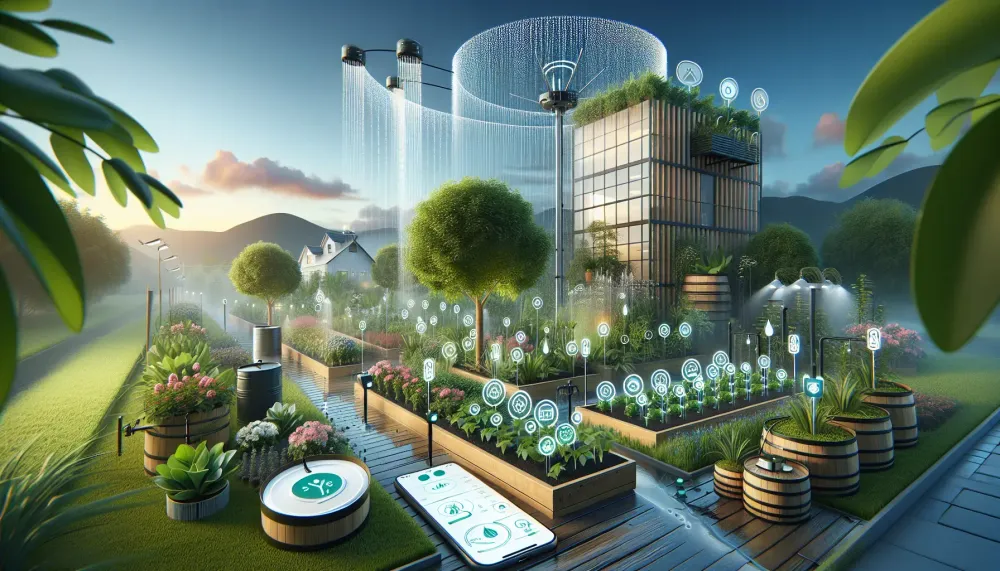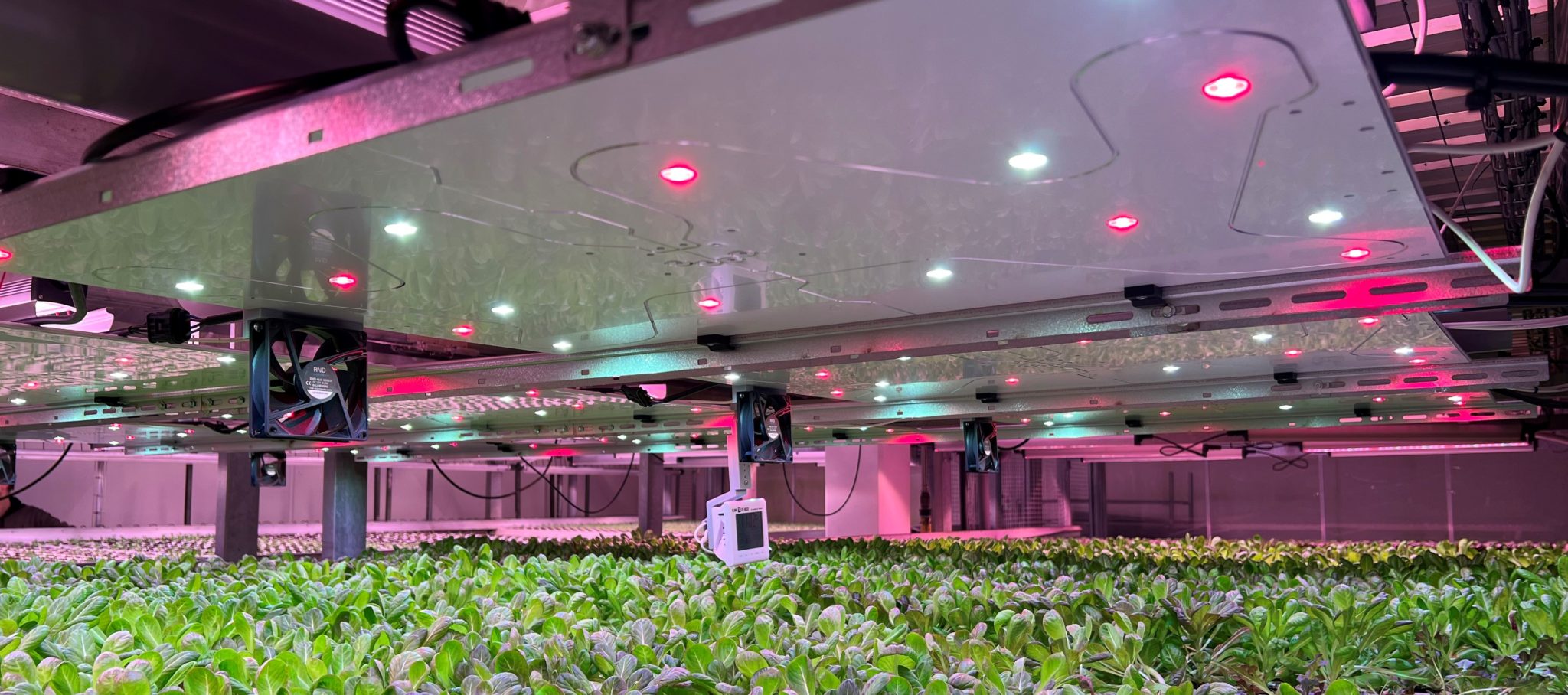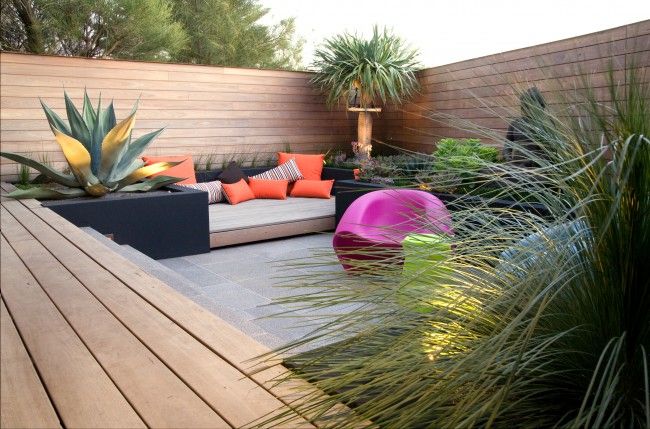
Cultivating the Future: A Comprehensive Guide to Implementing Smart Garden Technology
Embrace the digital age of gardening with smart technology. This guide provides a detailed roadmap for transforming your outdoor space into an intelligent, efficient, and thriving ecosystem.
Introduction: The Dawn of the Smart Garden
Imagine a garden that practically runs itself. A garden that knows when to water, when to fertilize, and even when to protect itself from pests. This isn’t a futuristic fantasy; it’s the reality of smart garden technology. Over the past few years, the convergence of the Internet of Things (IoT), sensor technology, and user-friendly software has revolutionized how we interact with our green spaces. From small balconies to expansive estates, smart garden technology offers a wealth of benefits, making gardening easier, more efficient, and more rewarding than ever before.
This guide will delve into the world of smart gardens, providing a comprehensive overview of the technology, its benefits, and a step-by-step approach to implementation. Whether you’re a seasoned gardener or a complete novice, this resource will equip you with the knowledge and tools you need to cultivate a thriving, intelligent garden.
Understanding the Core Components of Smart Garden Technology
At its core, a smart garden relies on a network of interconnected devices that collect data, analyze it, and then take automated actions. Let’s explore the fundamental components that make this possible:
Sensors: The Eyes and Ears of Your Garden
Sensors are the workhorses of a smart garden, gathering crucial information about the environment. They monitor various parameters, providing real-time data that drives automated decisions. Common types of sensors include:
- Soil Moisture Sensors: These sensors are vital for determining the moisture content of the soil. They provide data that informs the irrigation system, ensuring plants receive the right amount of water at the right time.
- Light Sensors: Light sensors measure the intensity of sunlight, helping to optimize plant placement and adjust shading strategies.
- Temperature Sensors: These sensors track air and soil temperatures, providing insights into the microclimate of your garden and helping to protect plants from extreme conditions.
- Humidity Sensors: Humidity sensors measure the amount of moisture in the air, which is important for disease prevention and understanding plant transpiration rates.
- Rain Sensors: These sensors detect rainfall and can override the irrigation system, preventing overwatering and conserving water.
- Nutrient Sensors: Advanced systems can even measure nutrient levels in the soil, allowing for precise fertilization.
Controllers and Hubs: The Brains of the Operation
Sensors gather data, but controllers and hubs are responsible for processing it and initiating actions. These devices act as the central point for all the connected components. They typically:
- Collect and Analyze Data: They receive data from the sensors and use algorithms to interpret it, identifying patterns and trends.
- Control Irrigation Systems: Based on the data, controllers can automatically activate or deactivate irrigation systems, adjusting watering schedules as needed.
- Manage Lighting: They can control grow lights or outdoor lighting systems, optimizing light exposure for plant growth.
- Provide Remote Access: Most controllers offer a user-friendly interface, allowing you to monitor your garden and make adjustments from your smartphone or computer.
Actuators: Putting Automation into Action
Actuators are the devices that carry out the actions dictated by the controller. They are the physical components that bring automation to life. Common examples include:
- Irrigation Valves: These valves control the flow of water to individual zones in your garden, allowing for precise watering schedules.
- Pumps: Pumps are used to deliver water from a water source to the irrigation system.
- Automated Shades or Blinds: In some cases, actuators can control shading systems to protect plants from excessive sunlight.
- Grow Lights: Actuators can turn grow lights on and off, providing supplemental light for indoor or outdoor plants.
Connectivity: The Glue That Holds It All Together
Connectivity is essential for a smart garden. It allows the various components to communicate with each other and with you. Common connectivity options include:
- Wi-Fi: Many smart garden devices connect to your home Wi-Fi network, allowing you to control them from your smartphone or computer.
- Bluetooth: Bluetooth can be used for short-range communication, such as setting up devices or making quick adjustments.
- Zigbee and Z-Wave: These are low-power wireless protocols specifically designed for home automation, offering better range and reliability than Wi-Fi in some cases.
- Cellular: Some systems use cellular connectivity, allowing you to monitor your garden from anywhere, even without a Wi-Fi connection.
Benefits of Implementing Smart Garden Technology
The advantages of embracing smart garden technology are numerous, extending beyond mere convenience. Here’s a look at some key benefits:
Enhanced Efficiency and Water Conservation
Smart irrigation systems are designed to deliver water precisely where and when it’s needed. This eliminates the waste associated with traditional watering methods, such as overwatering or watering during the hottest part of the day. By using soil moisture sensors and weather data, smart systems can optimize watering schedules, leading to significant water savings and reduced water bills.
Improved Plant Health and Growth
By providing plants with the optimal amount of water, nutrients, and light, smart garden technology promotes healthier growth. Sensors can detect early signs of stress, such as wilting or nutrient deficiencies, allowing you to take corrective action before the problem escalates. Automated systems can also adjust environmental conditions, such as temperature and humidity, to create the ideal growing environment.
Reduced Labor and Time Savings
Smart garden technology automates many of the time-consuming tasks associated with gardening, such as watering, fertilizing, and monitoring plant health. This frees up your time to enjoy your garden and pursue other interests. You can even monitor and manage your garden remotely, from anywhere in the world.
Cost Savings
While the initial investment in smart garden technology may seem significant, the long-term cost savings can be substantial. Water conservation leads to lower water bills, and efficient fertilization reduces the need for expensive fertilizers. Furthermore, by preventing plant diseases and pests, you can avoid costly treatments and replacements.
Increased Crop Yields
For those who grow their own food, smart garden technology can significantly increase crop yields. By optimizing growing conditions and providing plants with the resources they need, you can maximize the productivity of your garden. This can lead to a greater harvest and a more sustainable food supply.
Environmental Benefits
Smart garden technology promotes sustainable gardening practices. Water conservation reduces the strain on water resources, and efficient fertilization minimizes the runoff of chemicals into the environment. Furthermore, by growing your own food, you can reduce your reliance on the industrial food system and its associated environmental impacts.
Planning and Preparing Your Smart Garden
Before you start installing smart garden technology, it’s crucial to plan and prepare your outdoor space. This will ensure that the system you choose is suitable for your needs and that the installation process goes smoothly. Here’s a step-by-step guide to planning and preparing your smart garden:
Assess Your Garden’s Needs
Begin by assessing your garden’s specific needs. Consider the following factors:
- Size and Layout: Determine the size and layout of your garden. This will help you choose the right components and determine the optimal placement of sensors and irrigation zones.
- Plant Types: Identify the types of plants you are growing. Different plants have different water, light, and nutrient requirements.
- Sunlight and Shade: Assess the amount of sunlight and shade in your garden. This will help you determine the best locations for your plants and the need for shading systems.
- Water Source: Identify your water source and the location of your water supply lines. This will inform your irrigation system design.
- Electricity: Determine the availability of electricity in your garden. You’ll need a power source for your controller and other electronic devices.
Choose the Right Technology
Once you’ve assessed your garden’s needs, it’s time to choose the right technology. Consider the following factors:
- Budget: Set a budget for your smart garden project. Prices for smart garden systems vary widely, so it’s important to determine how much you’re willing to spend.
- Features: Identify the features that are most important to you. Do you need a sophisticated irrigation system, or are you primarily interested in monitoring plant health?
- Ease of Use: Choose a system that is easy to install and use. Look for user-friendly interfaces and clear instructions.
- Compatibility: Ensure that the components you choose are compatible with each other and with your existing home automation system, if applicable.
- Reviews: Read reviews from other users to get an idea of the system’s performance and reliability.
Prepare Your Garden for Installation
Before you begin installing your smart garden system, you’ll need to prepare your garden. This may involve:
- Clearing the Area: Remove any obstacles, such as rocks, weeds, and debris, from the installation area.
- Trenching: If you’re installing an underground irrigation system, you’ll need to dig trenches for the water lines and wiring.
- Installing Wiring: Run wiring for sensors, controllers, and other electronic devices.
- Connecting to Water Source: Connect the irrigation system to your water source.
- Testing the System: After installation, test the system to ensure that all components are working correctly.
Step-by-Step Guide to Implementing Smart Garden Technology
Here’s a practical guide to implementing smart garden technology, breaking down the process into manageable steps:
Step 1: Design Your System
Before purchasing anything, sketch out a plan. This should include:
- Garden Layout: Draw a map of your garden, noting the location of plants, water sources, and power outlets.
- Sensor Placement: Determine where you’ll place soil moisture sensors, light sensors, and any other sensors you plan to use. Consider the specific needs of different plant zones.
- Irrigation Zones: Divide your garden into zones based on plant type and water needs. This allows for customized watering schedules.
- Controller Location: Choose a central location for your controller, ideally sheltered from the elements.
Step 2: Choose Your Smart Garden System
Based on your design and budget, select the components for your smart garden:
- Controller/Hub: The central brain of your system. Consider features like Wi-Fi connectivity, app compatibility, and the number of zones it can manage.
- Sensors: Select the sensors that best suit your needs, such as soil moisture sensors, light sensors, and temperature sensors.
- Irrigation Valves: Choose valves that are compatible with your water lines and controller.
- Watering System Components: Sprinklers, drip lines, or soaker hoses, depending on your garden’s needs.
- Power Supply: Ensure you have a reliable power source for your controller and other devices.
Step 3: Install the Hardware
Follow the manufacturer’s instructions carefully. Generally, installation involves:
- Controller Setup: Mount the controller in a protected location and connect it to a power source.
- Sensor Placement: Install sensors according to the manufacturer’s guidelines. Soil moisture sensors are typically buried in the soil near plant roots.
- Irrigation System Installation: Connect the irrigation valves to your water supply and install the sprinklers or drip lines.
- Wiring (If Applicable): Connect the sensors and valves to the controller, following wiring diagrams.
Step 4: Configure the Software
Most smart garden systems come with an app or web interface. Follow these steps to set up your system:
- Download the App: Download the app from the App Store or Google Play.
- Create an Account: Create an account and log in to the app.
- Connect to Wi-Fi: Connect your controller to your home Wi-Fi network.
- Add Devices: Add your sensors and valves to the system, following the app’s instructions.
- Set Up Zones: Define watering zones and assign plants to each zone.
- Create Schedules: Set up watering schedules based on plant needs, weather conditions, and soil moisture levels.
- Customize Settings: Adjust settings such as watering duration, frequency, and sensor thresholds.
Step 5: Test and Monitor
Once everything is set up, test your system thoroughly:
- Run Test Cycles: Manually activate the irrigation system to ensure that all zones are working correctly.
- Monitor Sensor Data: Observe the data from your sensors to ensure they are providing accurate readings.
- Adjust Schedules: Fine-tune your watering schedules based on the data you receive from the sensors and the performance of your plants.
- Regular Maintenance: Regularly inspect the system for leaks, clogs, and other issues. Replace batteries in sensors as needed.
Step 6: Refine and Optimize
Smart gardening is an ongoing process. Continue to refine your system based on your observations:
- Observe Plant Growth: Monitor your plants’ health and adjust watering schedules as needed.
- Use Weather Data: Integrate weather data into your system to automatically adjust watering based on rain and temperature.
- Experiment with Settings: Don’t be afraid to experiment with different settings to find what works best for your garden.
- Review and Update: Regularly review your system’s performance and make adjustments as your garden evolves.
Choosing the Right Smart Garden System: Considerations and Recommendations
The market is brimming with smart garden systems, each offering a unique blend of features and capabilities. Choosing the right one can feel overwhelming. Here’s a guide to help you make an informed decision:
Key Features to Consider
- Number of Zones: Determine how many separate watering zones you need to cover your entire garden.
- Connectivity: Ensure the system supports the connectivity options you prefer (Wi-Fi, Bluetooth, etc.).
- Sensor Compatibility: Check which sensors are compatible with the system and whether they meet your specific needs.
- App Interface: Evaluate the user-friendliness of the app, including its ease of use, features, and reporting capabilities.
- Integration with Smart Home Systems: If you have a smart home system, look for a system that integrates seamlessly with it.
- Budget: Consider the initial cost of the system, as well as any ongoing costs such as sensor replacements or subscriptions.
- Reliability: Read reviews and research the brand’s reputation for reliability and customer support.
Popular Smart Garden System Options
Here are some examples of smart garden systems available on the market (Please note that product recommendations can change. Always research current options):
- Rachio: Known for its advanced features, user-friendly interface, and integration with smart home systems. Offers precise watering schedules based on weather data.
- Orbit B-hyve: A popular and affordable option that offers a range of features, including Wi-Fi connectivity and smart watering schedules.
- Netro: Focuses on water conservation and ease of use, with a user-friendly app and smart watering algorithms.
- RainPoint: Offers a range of smart watering timers and sensors, known for their affordability and ease of installation.
- Gardena: A well-established brand with a comprehensive range of smart garden products, including irrigation systems, robotic lawnmowers, and more.
Making Your Choice
To make the best choice, consider your specific needs and budget. Start by researching the features and benefits of each system, then compare them based on the criteria outlined above. Read reviews from other users to get a sense of the system’s performance and reliability.
Troubleshooting Common Issues in Smart Gardens
Even with the best technology, problems can arise. Here’s how to troubleshoot some common issues:
Irrigation System Problems
- No Water: Check your water supply, make sure the main valve is open, and inspect the irrigation lines for leaks or clogs.
- Uneven Watering: Adjust the sprinkler heads or drip lines to ensure even coverage. Check for clogs or obstructions in the nozzles.
- Overwatering or Underwatering: Fine-tune your watering schedules based on plant needs and weather conditions. Adjust the sensor thresholds.
Sensor Problems
- Inaccurate Readings: Ensure sensors are installed correctly and are not exposed to direct sunlight or extreme temperatures. Calibrate the sensors if necessary.
- Connectivity Issues: Check your Wi-Fi connection and ensure the sensors are within range of the controller. Replace batteries if needed.
- Sensor Failure: If a sensor is consistently providing inaccurate readings, it may need to be replaced.
Controller Problems
- Connectivity Issues: Check your Wi-Fi connection and ensure the controller is properly connected to your network. Restart the controller and the app.
- App Errors: Update the app to the latest version. If the problem persists, contact the manufacturer’s customer support.
- Power Issues: Ensure the controller is properly connected to a power source and that the power outlet is working.
General Tips
- Consult the Manual: Refer to the manufacturer’s manual for troubleshooting tips and specific instructions.
- Contact Customer Support: If you’re unable to resolve the issue, contact the manufacturer’s customer support for assistance.
- Regular Maintenance: Perform regular maintenance, such as cleaning sprinkler heads and inspecting the system for leaks.
Advanced Smart Garden Applications and Future Trends
The smart garden landscape is constantly evolving, with exciting new applications and trends emerging:
Precision Agriculture for Home Gardens
Leveraging the principles of precision agriculture, smart gardens are becoming increasingly sophisticated. This includes:
- Automated Nutrient Management: Systems that automatically dispense fertilizers and adjust nutrient levels based on plant needs.
- Disease Detection: Using sensors and image recognition to detect early signs of plant diseases.
- Microclimate Control: Advanced systems that control temperature, humidity, and light levels to create the perfect growing environment.
Integration with Other Smart Home Devices
Smart gardens are increasingly integrated with other smart home devices, creating a holistic and automated lifestyle. This includes:
- Voice Control: Control your smart garden with voice commands using virtual assistants like Alexa or Google Assistant.
- Smart Security Systems: Integrating your garden with security cameras and motion sensors for added peace of mind.
- Smart Lighting: Controlling outdoor lighting to enhance the aesthetic appeal and security of your garden.
Vertical Farming and Indoor Gardening
Smart garden technology is transforming vertical farming and indoor gardening. This includes:
- Automated Hydroponics: Systems that automate the watering, fertilization, and lighting of hydroponic gardens.
- Indoor Grow Rooms: Creating controlled environments for growing plants indoors, regardless of the weather conditions outside.
- Smart Greenhouses: Automating the climate control and irrigation of greenhouses for optimal plant growth.
The Future of Smart Gardens
The future of smart garden technology is bright. We can expect to see:
- More Affordable Systems: As technology advances, smart garden systems will become more affordable and accessible to a wider audience.
- Improved Artificial Intelligence: AI will play an increasingly important role in optimizing plant growth and automating garden tasks.
- Greater Sustainability: Smart garden technology will continue to promote sustainable gardening practices, conserving water and reducing environmental impact.
- Personalized Gardening Experiences: Systems that are tailored to individual plant needs and gardening preferences.
Embracing smart garden technology is an investment in the future of gardening. It offers a path towards a more efficient, sustainable, and rewarding way to cultivate your outdoor space. As technology continues to advance, the possibilities for smart gardening are limitless.



